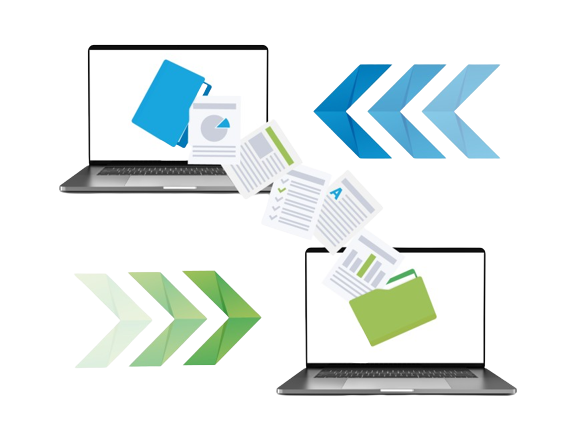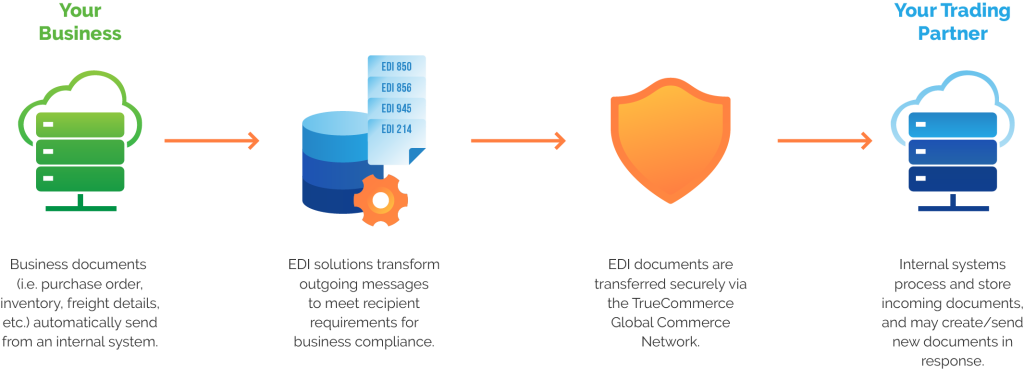Electronic Data Interchange
❝
By utilizing Statelake Electronic Data Interchange (EDI), you can establish real-time connections with your customers and partners. This enables you to automate data entry, enhance data accuracy, streamline transactions, boost productivity, reduce costs, strengthen customer and supplier relationships, and expedite payment processing.
❞
What is EDI?
Electronic Data Interchange (EDI) is a framework or approach used to exchange business documents with various trading partners, such as suppliers, customers, carriers, 3PLs (third-party logistics providers), and other connections within the supply chain.
This approach replaces traditional paper documents and manual business processes with automation, allowing for the seamless exchange of various document types such as purchase orders, advance ship notices, and invoices. EDI software employs specific transaction codes to facilitate the transfer of data between computer systems, following standard formats. In North America, the ANSI X-12 standards are commonly used for EDI transaction codes, while European businesses utilize the EDIFACT protocol for their EDI transactions.

How Does Electronic Data Interchange Work?
EDI enhances business processes by substituting manual data entry methods like mail, fax, and email with electronic exchanges of business documents between two companies, even if they utilize distinct internal business systems.The majority of Electronic Data Interchange transactions commence by generating an electronic document, utilizing data from your business system(s), spreadsheets, or related transactions. These documents adhere to standardized EDI formats, known as transaction codes, which facilitate seamless integration and utilization across multiple businesses.
Electronic Data Interchange also enables brands to fulfill compliance requirements set by retailers and distributors, ensuring that every outgoing document contains accurate and complete data in the required format. Through the process of “mapping” data to meet these specific requirements, suppliers can effortlessly meet the expectations of buyers, establish smooth communication channels, and save valuable time in the process.
Various providers utilize distinct EDI networks and systems to transmit electronic documents. Additionally, there are various types of EDI solutions available, including web EDI portals, direct EDI, and fully integrated EDI. To explore more about these options, we encourage you to refer to our comprehensive EDI Buyer’s Guide provided below

Download The Guide To EDI
- End-to-end business automation with electronic data interchange
EDI facilitates the systematic electronic transfer of business documents and information between diverse organizations and their respective business applications. It empowers businesses and their crucial trading partners to seamlessly exchange business transactions in an automated manner, directly from the accounting package to their supply chain systems.
- Benefits of EDI include:
- Significant reduction in costs associated with manual data entry
- Elimination of human error
- Improved timeliness, accessibility and accuracy of business data
- Reduction in administrative costs and consumables
- Improved cash flow resulting from electronic transmission of invoices
- Better business relationships with trading partners
EDI simplifies the challenges associated with managing numerous suppliers and effectively meets the expectations of customers who demand high levels of service delivery. Furthermore, EDI serves as an excellent tool for companies to foster customer loyalty.
Let's work together
Creating digital experiences that help you grow is what we do best. Tell us about your needs, we would love to help.

